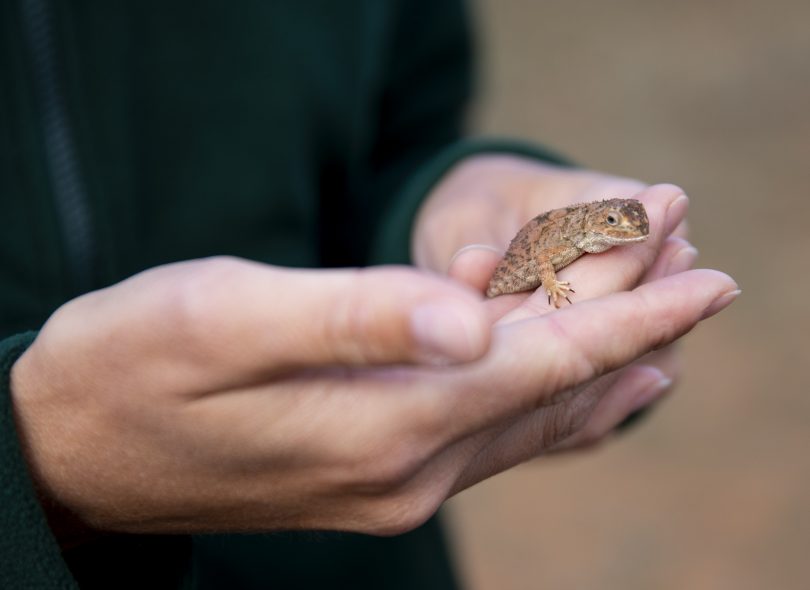
Who’s a good boy? Photos: Supplied.
On the dry grassland reserve in Jerrabomberra Valley, a brown and white springer spaniel trots up a hill, his curious nose planted firmly on the ground.
His name is Tommy, and he is no regular canine. He has the very important job of using the 220 million olfactory receptors in his nose to pick up the scent of one of the world’s rarest reptiles, the tiny grassland earless dragon.
The man’s best friend is using his nose to help the ACT Parks and Conservation Service monitor the iconic and endangered dragon and gauge its population in the area.
Tommy can identify and respond to the scent of earless dragons across a 20-metre squared area within one minute – a mere fraction of the time it takes a human ranger searching by eye.
Declared as an endangered species in 1996, the dragons, which have declined in recent decades likely due to a combination of drought, overgrazing and climate change, weigh around five grams and are rarer than pandas.
They are incredibly difficult to spot with the naked eye given they are the size of a 50 cent piece, and are very good at camouflaging themselves and like to hide down spider burrows in the dirt.

The star of the show, Tommy with his trainer Steve Austin and Minister Gentleman.
Tommy has previously been helpful in detecting feral cats and foxes, but his trainer Steve Austin said teaching his pupil how to find an endangered species was a little harder. As part of his three months of training, Tommy has been taught not to go after the species once he finds them.
“We started Tommy off by getting used to some dragon droppings from those in captivity and trained him on that before we brought him down to Canberra for live finds,” Mr Austin said.
“The endangered species are a lot more difficult, simply because of the fact there’s not a lot around, which is why we only had droppings to train on.
“He has been trained not to engage with them or touch them. He’s trained to put his nose near the burrows, which indicates there’s a dragon there.”

Up until 1991, grassland earless dragons were thought to have been extinct.
ACT Parks and Conservation Service has been investigating innovative ways to survey the grassland earless dragon as part of its long-standing monitoring program, which involves four staff undertaking regular checks over a period of seven weeks.
Tommy will be used for a trial over the course of a week, and if successful, more conservation dogs will be used on a permanent basis to help track the endangered species.
ACT Environment Minister Mick Gentleman believes the pilot program paves the way for more efficient and effective monitoring of the native species.
“Initial results look promising and the dogs have the potential to enable a more accurate assessment of population numbers,” he said.
“Conservation detection dogs are a highly effective, accurate and efficient tool for detecting the elusive species in a range of habitats.
“We’re also hoping the trial will confirm the presence of grassland earless dragons in areas where they were thought to have disappeared.”
Original Article published by Lachlan Roberts on The RiotACT.








